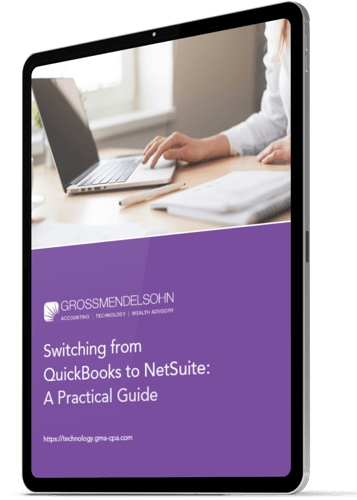As a starter system for fashion companies, QuickBooks is a logical and economical choice. QuickBooks provides the basic functionality any fashion business needs in a financial management system — managing a company’s chart of accounts and its relationships with vendors and customers through accounts payable and accounts receivable.
Providing this core functionality at a reasonable price point has made QuickBooks the system norm across many industries.
However, with evolving innovation, heightened customer expectations and increased competition, companies can no longer rely on outdated business models or business management systems. You need to know when’s the right time to transition to a robust ERP system.
QuickBooks Can Serve as a Starter Financial Management System, With Limits
eCommerce has provided a platform for entirely new business models, giving digitally native brands the ability to build a loyal following and rapidly grow sales. Though most recognize these changes and the need to innovate to keep pace, fashion companies are reluctant to connect their business systems to that vital innovation.
Some are daunted by the task of overhauling existing systems; others are convinced they won’t find a solution that can meet their needs in an affordable way. But those decisions can be even more costly in the long run.
Here are four signs that QuickBooks might be failing your business:
- It’s difficult to find out what’s really happening across your business in real-time
- Team members waste time hunting for the right spreadsheet when looking at purchases and inventory
- Financial consolidation between systems takes ages
- It’s too difficult to add new sales channels, product lines or revenue streams domestically or internationally
What’s Next: Is an Inventory Management Add-On the Solution or a Temporary Band-Aid?
For companies in start-up mode or for those who choose to make do with QuickBooks, despite their growth or maturation, the next technology investment after financials is most often inventory management.
There are several add-on solutions on the market today claiming to provide advanced inventory capabilities through a seamless integration to the QuickBooks system. However, companies quickly realize that an add-on inventory management solution does not make an ERP system.
Here are four signs that an add-on inventory solution might be limiting your business:
- Frequent and time-consuming IT support required for system updates and QuickBooks integration
- Reporting is limited and not in real-time
- System is not built for fashion and hard to fit to your business model
- No supply chain forecasting or budgeting capabilities
If your fashion company is struggling with these challenges because of its QuickBooks and add-on inventory solution, it may be time to consider an integrated business management suite.
NetSuite: A Suite Approach
NetSuite was built upon the idea that a unified suite of applications spanning across a whole business allows companies to operate off a single version of the data. NetSuite’s predefined roles and dashboards are tailored around a user’s day-to-day tasks, enabling the most efficient consumption of information throughout the entire organization.
For fashion companies, having inventory and financial data in the same system means that financial activities appear as soon as items are purchased or sold—allowing them to make decisions on inventory purchasing, allocation, sales forecasting and budgeting based on facts, rather than guesswork. This eliminates the manual work done in spreadsheets to reconcile inventory and sales across multiple systems, and reporting is delivered on-demand.
The Benefits of a Cloud Solution
NetSuite is a true cloud platform. There’s a world of difference between software designed for the cloud and software designed for on-premises. Fashion companies on QuickBooks often do not have the technical resources in-house to manage on-premises systems and their upkeep. As a company grows, this becomes unmanageable and painful.
Moving to a cloud solution has several benefits for fashion companies:
Free Finance for Strategic Tasks: Automation frees up time for finance and operations staff, allowing them to focus on revenue-generating strategic projects and analysis, and enabling the company to scale while keeping headcount flat.
Reduced Financial Close Time and Manual Data Entry: Automate and control approvals on transactions from AP bills to journal entries, speed up period-end close due to system controls, improve accuracy of financials and reduce month-end processing costs and time.
Lower Audit Costs: Ever-changing compliance standards, small accounting teams and heavy spreadsheet use are time-consuming and subject to risk. This can lead to higher audit costs, or longer and more involved audit processes.
Platform For Innovation: Easily launch new business models and expand internationally with a platform that evaluates all possible ways to scale and increase revenue, while supporting multi-currency, multi-entity and different accounting standards.
A well-implemented, cloud-based system means that financial activities appear as soon as they are triggered. Coupled with “anywhere, anytime” access means that decision makers can quickly act upon both adverse and favorable performance indicators.
Decision-making becomes an activity where those tasked with executing the company’s goals and strategy can do so with information that is akin to looking through the front windshield of a car, rather than constantly worrying about what is in the rearview mirror.
The combination of these demonstrable benefits means that a well-executed move to the cloud results in a much better and more predictable cost of operation than is possible with on-premises systems.
Need Help?
If you’d like to learn whether it may be time to consider the switch from QuickBooks to NetSuite for your business, contact us online or give us a call at 410.685.5512 to schedule a demo.


